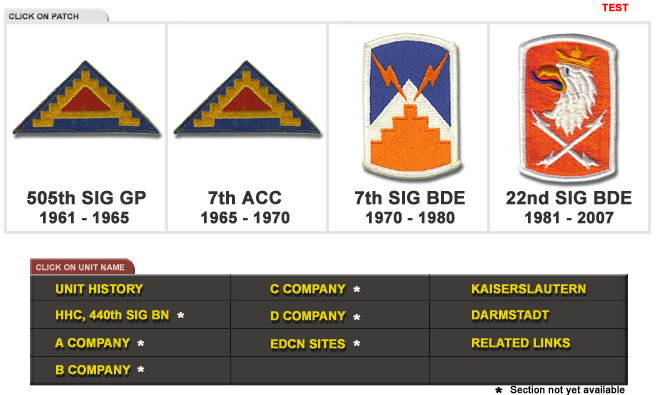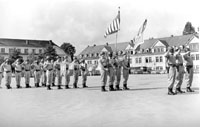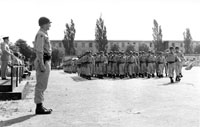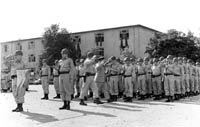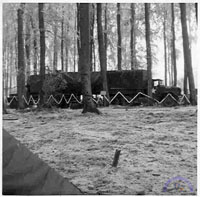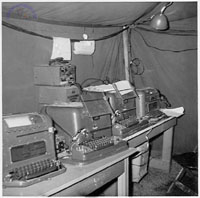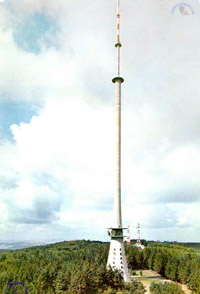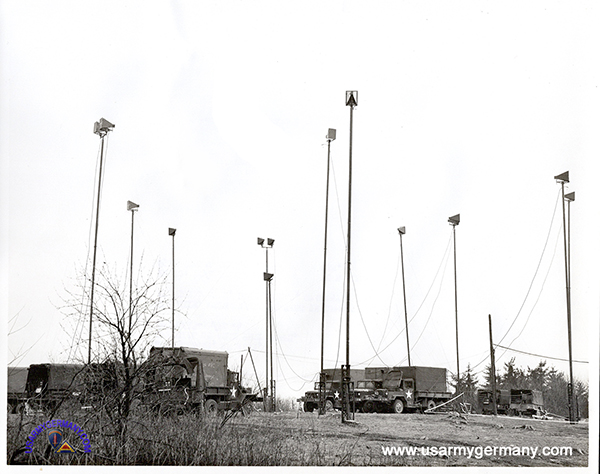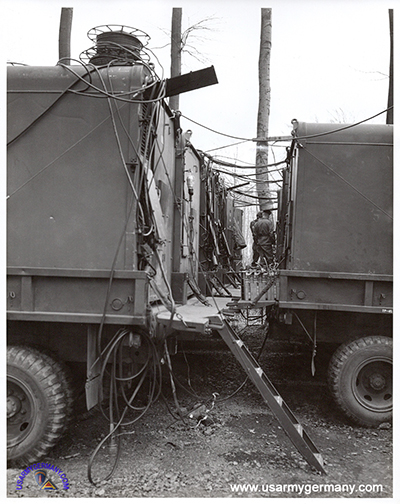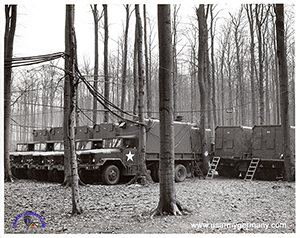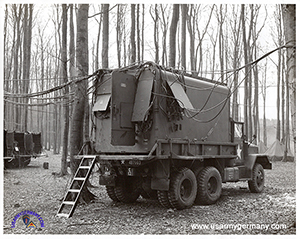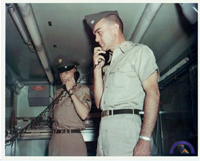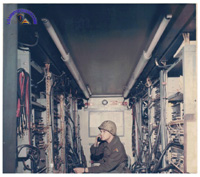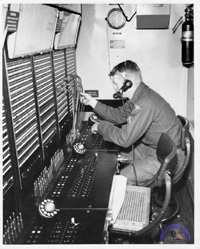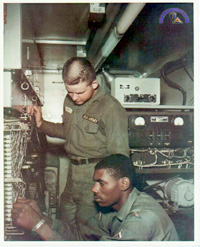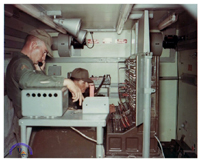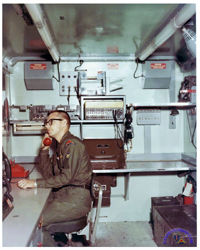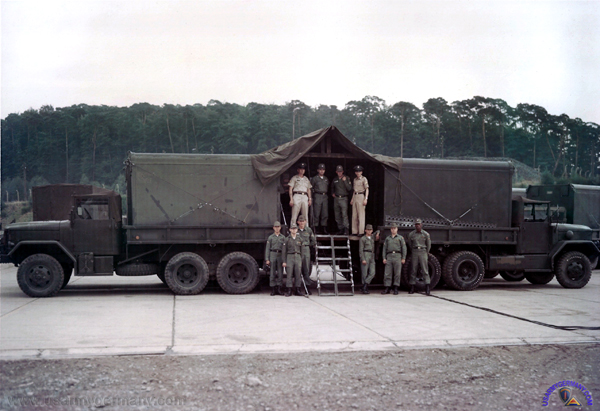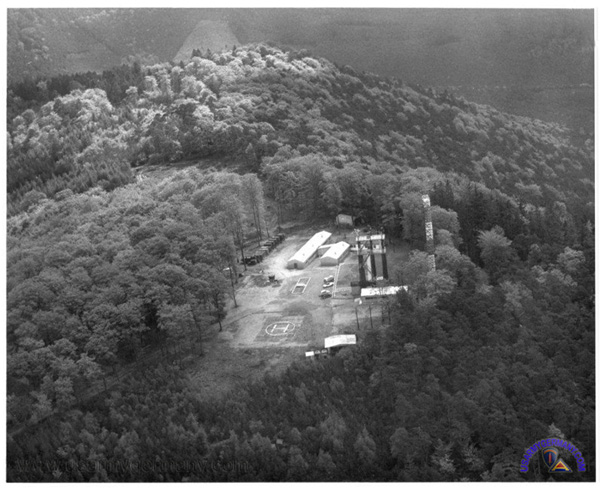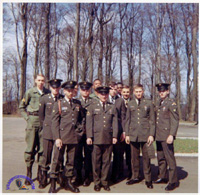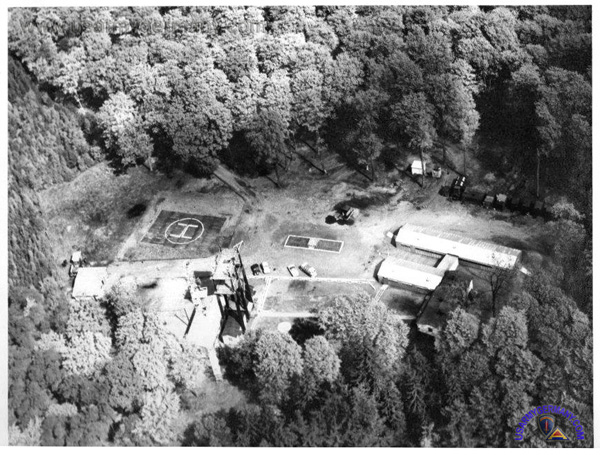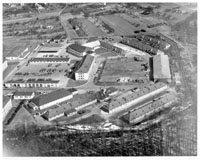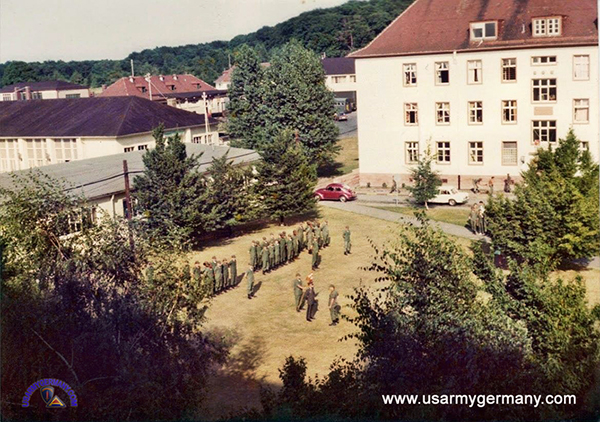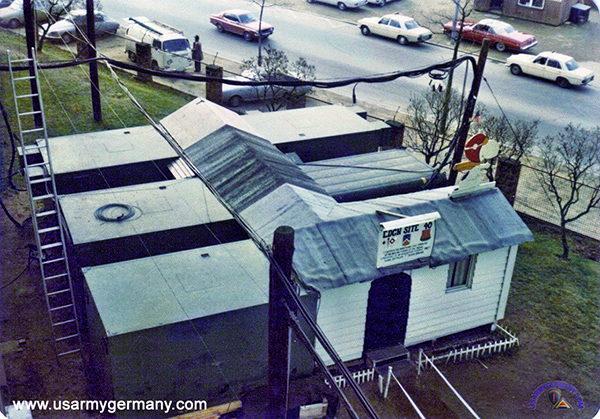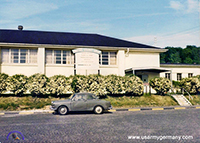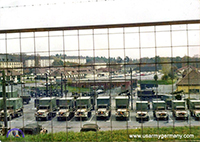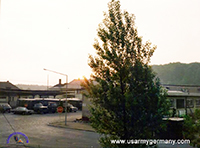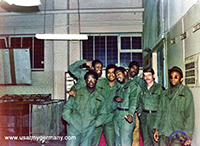| If you do
NOT see the Table of Contents frame to the left of this page, then Click here to open 'USArmyGermany' frameset |
||||||||||||||||||||||||||||||||||||||||||||||||||||||||||||||||||||||||||||
440th Signal Battalion |
||||||||||||||||||||||||||||||||||||||||||||||||||||||||||||||||||||||||||||
|
|
||||||||||||||||||||||||||||||||||||||||||||||||||||||||||||||||||||||||||||
|
||||||||||||||||||||||||||||||||||||||||||||||||||||||||||||||||||||||||||||
|
|
||||||||||||||||||||||||||||||||||||||||||||||||||||||||||||||||||||||||||||
| Battalion History | ||||||||||||||||||||||||||||||||||||||||||||||||||||||||||||||||||||||||||||
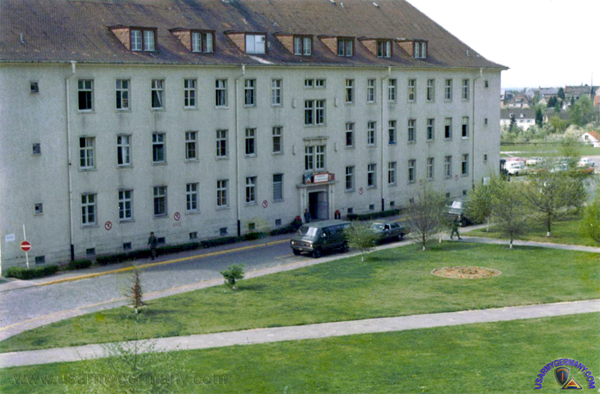 HQ Building, 440th Sig Bn, Cambrai-Fritsch Kaserne, ca. 1974 (William C. Gaither) |
||||||||||||||||||||||||||||||||||||||||||||||||||||||||||||||||||||||||||||
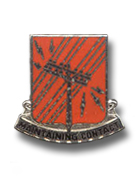 440th Signal Bn DUI
440th Signal Bn DUI |
||||||||||||||||||||||||||||||||||||||||||||||||||||||||||||||||||||||||||||
| The 440th Signal
Battalion activated on 1 October 1961 at Kaiserslautern, Germany.
The unit was stationed at Kleber Kaserne. The Battalion moved to Cambrai-Fritsch Kaserne at Darmstadt, Germany on 21 September 1972. On 16 April 1980, the Battalion was reassigned to V Corps and became part of the 22nd Signal Brigade. |
||||||||||||||||||||||||||||||||||||||||||||||||||||||||||||||||||||||||||||
| If you have more
information on the history or organization of the 440th Signal Battalion,
please contact me |
||||||||||||||||||||||||||||||||||||||||||||||||||||||||||||||||||||||||||||
| 1962 | ||||||||||||||||||||||||||||||||||||||||||||||||||||||||||||||||||||||||||||
| (Source: Email from Douglas Minnick, Co B, 440th Sig Bn, 1962-63) | ||||||||||||||||||||||||||||||||||||||||||||||||||||||||||||||||||||||||||||
| I
would like to exchange pictures of the "Hill" (Warren Radio Relay, Bad Dürkheim) with other 440th fellows. Don’t know that they ever called it by its Hill number. It’s the same site as referred to in the 1st Circus website run by Ron Hochstetle. Ron has not replied to any e-mails for several years. There were seven of us living in a small (may be 1200 sq ft) house, we had to make water runs down off the site (I think it may have been a small Air Force Station, but can’t remember the town). The house had a 20 x 10 kitchen where we cooked, relaxed, and viewed new first run 16mm movies of which we got about 10 a month. We picked the movies up on our occasional trips to K-Town. The house also had a small 8x6 washroom to wash your face and shave in. The pot was an outhouse down by a Quonset storage hut by Gate Two. The rest of the house was a big bunk room about 20x30 ft. The NCIOC had a private room in the end of the radio shack. |
||||||||||||||||||||||||||||||||||||||||||||||||||||||||||||||||||||||||||||
| (Source: Email from Gary Feddern) | ||||||||||||||||||||||||||||||||||||||||||||||||||||||||||||||||||||||||||||
| I served with Charlie Company from 1962 until late 1964. At that time, Charlie Company was in Baumholder. We supported the 293rd Engineer Battalion primarily and others on occasion. I was a 296 radio repairman. I obtained the rank of E5 and was NCOIC of the HF section. I was drafted into the Army but re-elisted in basic so have that RA55 serial number. I did not stay in touch with anyone in the 440th unfortunately. But do have a lot of good memories. |
||||||||||||||||||||||||||||||||||||||||||||||||||||||||||||||||||||||||||||
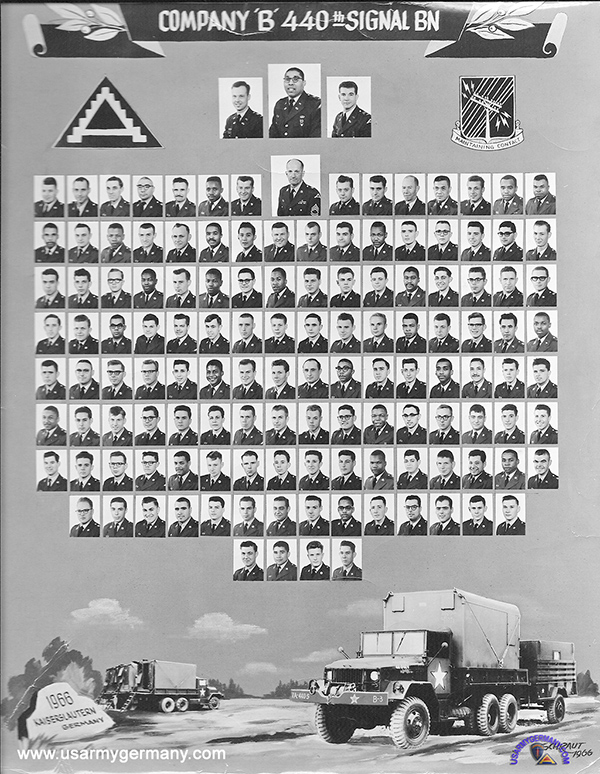 Group photo, B Company, 1966 (Please contact the webmaster if you can identify any of these soldiers) |
||||||||||||||||||||||||||||||||||||||||||||||||||||||||||||||||||||||||||||
| 1963 | ||||||||||||||||||||||||||||||||||||||||||||||||||||||||||||||||||||||||||||
| (Soucre: Email from Charles Clark) | ||||||||||||||||||||||||||||||||||||||||||||||||||||||||||||||||||||||||||||
| Served in K-town from 1963-67. My pic is 4th row from bottom, 10th from left. Forgotten most of the names in the picture. If I ever find a source will forward them. When this pic was taken Captain Gregory was OIC. Noticed a lot of comments on Hawaii Station. I made quite a few trips up there for water run after station personnel rolled the water trailer a couple of times and were being punished and not allowed to do it themselves. Made the stop at the guesthouse down the hill to dump a few gallons as usual. At one time a German Shepard dog was found and adopted by the station members and I recall the dog didn't care for strangers and was borderline mean but loved none the less. I was a 31m20, handled carrier and teletype equip. B36 was my truck number. Didn't mess with the radio's. Trained on the old Trac 24 radio but never learned the Ang 50 that replaced the 24. |
||||||||||||||||||||||||||||||||||||||||||||||||||||||||||||||||||||||||||||
| 1964 | ||||||||||||||||||||||||||||||||||||||||||||||||||||||||||||||||||||||||||||
| (Source: Gary Feddern; from the brochure they handed out during the Organization Day ceremonies) | ||||||||||||||||||||||||||||||||||||||||||||||||||||||||||||||||||||||||||||
| 22nd ANNIVERSARY OF ACTIVATION ORGANIZATIONAL ACTIVITIES: 25-28 MARCH 1964 HEADQUARTERS 440TH SIGNAL BATTALION APO 227 US FORCES 23 March 1964 Members and guests of the 440th Signal Battalion: It gives me great pleasure to welcome you to the various activities and displays which we have prepared in recognition of the 22nd anniversary of the activation of our battalion. As a member of the 440th Signal Battalion, you can take justifiable pride in its past accomplishments and in the awards bestowed on it. The battalion has proved its mettle in World War II, in the Korean War, and as a member of the NATO team in Germany. During the past year, the 440th Signal Battalion has participated in six major field exercises, including the well known Operation BIG LIFT, and in ten small operations. The battalion was cited for the outstanding BIG LIFT communications network which it established, operated and maintained from the US arrival air bases in France to the control centers and staging areas in Germany. Since our last anniversary on 25 March 1963 members of the battalion have received six Army Commendation Medals, two Seventh Army Certificates or Achievement, fifteen 505th Signal Group Certificates of Achievement,. and 127 Letters of Commendation or Appreciation for outstanding service. As I approach the end of my tour with the Seventy Army in Europe, I also take this occasion to thank each of you for the unfailing support, cooperation, and esprit which you have displayed to me during these past sixteen month of service together. You can be sure that I will always consider my command of the 440th Signal Battalion as the highlight of my military career. To those of you who are with us today as guests, I sincerely hope that the displays and refreshments which are provided will interest and entertain you. Enjoy your visit to the 440th Signal Battalion, but drive carefully on the return trip to your home. REX D. MINCKLER Lt Col. SigC Commanding |
||||||||||||||||||||||||||||||||||||||||||||||||||||||||||||||||||||||||||||
| ITINERARY | ||||||||||||||||||||||||||||||||||||||||||||||||||||||||||||||||||||||||||||
| Wednesday, 25 March 1964 | ||||||||||||||||||||||||||||||||||||||||||||||||||||||||||||||||||||||||||||
|
||||||||||||||||||||||||||||||||||||||||||||||||||||||||||||||||||||||||||||
| Thursday 26 March 1964 | ||||||||||||||||||||||||||||||||||||||||||||||||||||||||||||||||||||||||||||
|
||||||||||||||||||||||||||||||||||||||||||||||||||||||||||||||||||||||||||||
| Friday 27 March 1964 | ||||||||||||||||||||||||||||||||||||||||||||||||||||||||||||||||||||||||||||
|
||||||||||||||||||||||||||||||||||||||||||||||||||||||||||||||||||||||||||||
| Friday 27 March 1964 | ||||||||||||||||||||||||||||||||||||||||||||||||||||||||||||||||||||||||||||
|
||||||||||||||||||||||||||||||||||||||||||||||||||||||||||||||||||||||||||||
| As of March 1964 COMMANDERS Battalion Commander............................................... Lt Col Rex D. Minckler Headquarters Company............................................ 1st Lt Martin W. Shuey A Company............................................................... Capt Keith E. Clum B Company............................................................... Capt Edward J Kelly C Company............................................................... Lt Joseph H. Griggs D Company............................................................... Capt Bobby R. Harris E Company (C Company, 26th Sig Bn Attached).......... Capt Pierce A Rushton Jr. Supply Point 715 ( B Company, 504th Sig Bn Attached).. CWO Howard L. Mayberry SERGEANT MAJOR Hq's 440th Signal Battalion....................................... Sgt Major Loran C. Flanagan FIRST SERGEANTS Headquarters Company........................................... 1st Sgt Louis D. Annis A Company............................................................... 1st Sgt Arthur A. Spanjer B Company............................................................... 1st Sgt Bernhardt G. Alama C Company............................................................... 1st Sgt Walter W. Jones D Company............................................................... 1st Sgt Theodore C. Spellacy E Company (C Company, 26th Sig Bn Attached).......... 1st Sgt Albert F. Martin |
||||||||||||||||||||||||||||||||||||||||||||||||||||||||||||||||||||||||||||
| Written 20 March 1964 and included in the brochure of the anniversary celebration. The 440th Signal Battalion is one of the most decorated signal organizations in the Seventh Army. The battalion was originally activated on 25 March 1942, at Gieger Field, Spokane, Washington as a Signal Heavy Construction Battalion. The battalion served during World War iI in the Southern Pacific area beginning in Australia and continuing to New Guinea, Biak, Leyte, Luzon, Okinawa, and Japan. The colors of the 440th Signal Battalion bear battle streamers from the World War II campaigns in Papua, New Guinea, Leyte, Luzon and the Ryukus. The Meritorious Unit Commendation was awarded the battalion for wartime service during the period 1 January 1944 until 1 June 1945. In addition to its American awards, the battalion also received the Philippine Presidential Unit Citation for service from 17 October 1944 until 4 July 1945. As an element of the Fifth US Air Force during the Korean War, the 440th Signal Battalion participated in the following Korean Campaigns: UN Defense, UN Offense Chinese Communist Forces Intervention, and the Korean Summer-Fall Campaign of 1953. The Presidential Distinguished Unit Citation was awarded to the entire battalion for it outstanding service during the period 10 October until 31 December 1950. In addition, the 440th Signal Battalion is one of fifteen organizations in the entire US Army and the only Signal Battalion to receive the US Air Force Outstanding Unit award for distinguished service in Korea from 1950 - 1953. During the Korean War the battalion also received the Korean Presidential Unit Citation for outstanding service from 1 October 1950 until 31 December 1950. The 440th Signal Battalion was deactivated in Korea on 16 May 1956. However, on 1 October 1961, the battalion was reactivated with headquarters in Kleber Kaserne, Kaiserslautern, Germany. As a member of the 505th Signal Group, the battalion has the general mission of providing a portion of the area communications required by Seventh Army units when they are located in the field. Each of us, as a member of the 440th Signal Battalion, has a proud heritage to uphold. Take pride in your job and remember your battalion. |
||||||||||||||||||||||||||||||||||||||||||||||||||||||||||||||||||||||||||||
|
||||||||||||||||||||||||||||||||||||||||||||||||||||||||||||||||||||||||||||
| (Source: Email from Darryl Gerstner, Co C, 440th Sig Bn) | ||||||||||||||||||||||||||||||||||||||||||||||||||||||||||||||||||||||||||||
| I was running through the directory on the 440th Signal Bn and I ran across your web page and found the name Gary Feddern. We were in "C" Company at the same time, while it was still in Baumholder. I was a message center specialist. I was there from 1962-64. I had my travel orders to come home when "C" & "D" moved to Ktown in 1964. I have a lot of photos of faces that no longer have names, but I do enjoy getting them out. Stirs up a lot of memories. We could look out the back of our barracks and straight across the big ravine from us was "D" Company, 440th. |
||||||||||||||||||||||||||||||||||||||||||||||||||||||||||||||||||||||||||||
|
||||||||||||||||||||||||||||||||||||||||||||||||||||||||||||||||||||||||||||
| 1965 | ||||||||||||||||||||||||||||||||||||||||||||||||||||||||||||||||||||||||||||
| (Source: Email from William D. Crosier) | ||||||||||||||||||||||||||||||||||||||||||||||||||||||||||||||||||||||||||||
I served with the 440th from March 1965 - September 1967. Sgt Gannaon was my platoon sgt part of that time.
I was also NCOIC at New Mexico radio site for about 5 months just be for I left Germany. As best as I can remember the site was about 4 or 5 klicks south of Baumholder. I could be all wrong -- it has been almost 50 yrs and to me the sun came up in the west every day I was in Germany.
There were 5 of us on the site and we were billeted with the 3rd Armored Cav in Baumholder HQ Co. Their 1st Sgt was Sgt Fowler. Him and I got cross threaded a few time. I can' remember the names of most of the guys but Jacob Cambell was my driver. J.T. Cox was the carrier section Sgt. Sgt Gannon was the Plt Sgt. I believe the 440th is back in the States now, if it still exist. |
||||||||||||||||||||||||||||||||||||||||||||||||||||||||||||||||||||||||||||
| 1966 | ||||||||||||||||||||||||||||||||||||||||||||||||||||||||||||||||||||||||||||
| (Source: Larry Scheibe, B Company) | ||||||||||||||||||||||||||||||||||||||||||||||||||||||||||||||||||||||||||||
| I was assigned to Company B in late May 1966 as a cook. I worked in the consolidated mess hall in the center of Kleber Kaserne. I spent 22 months there. On Dec 24 the unit was gathered together and informed that we were going to participate in REFORGER. I was selected and reassigned to Delta Company to go to Ft Hood, Tx to head up the mess hall for the main body which was to come in August. While being on the advanced party we had to get all things ready for the main body including beds, motor pool, supply room, mess hall, etc. While we were there (at Ft Hood) the advance party had to train for the riots that were going on in Chicago for the democratic convention. We were not called to Chicago. I was discharged on Dec 16, 1968 as an early out for X-mas. I did recognize some of the people on the 1966 unit picture. Top row 4th from the left was Duke my food service NCO; top row 3rd from right was SGT Kieffer; fourth row 5th from the left was SP4 Wolf from the motor pool; eighth row in the middle was Specialist Jerry Hewitt our supply clerk. I hope I helped with some info. The consolidated mess hall fed close to 800 to 900 per meal. All of the 440th signal Bn ate there along with C Company of the 26th Signal Bn; the photo unit which was at Kleber Kasern; and maybe one or two other units. The Armor unit at the Kaserne had there own mess hall. At one time we had 48 cooks until the commands found out and then reduced that amount real fast. |
||||||||||||||||||||||||||||||||||||||||||||||||||||||||||||||||||||||||||||
|
||||||||||||||||||||||||||||||||||||||||||||||||||||||||||||||||||||||||||||
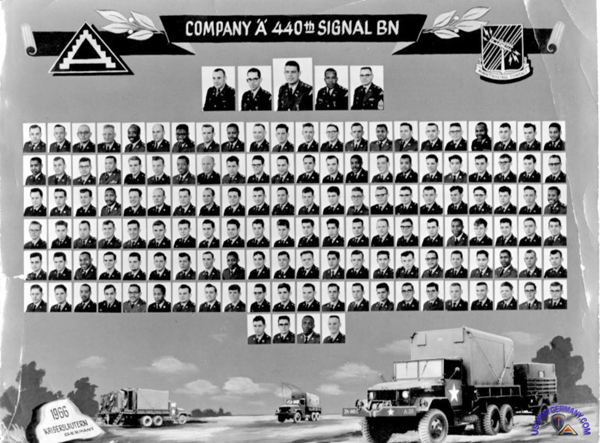 Group photo, A Company, 1966 (Charles Clark) (Please contact the webmaster if you can identify any of these soldiers) |
||||||||||||||||||||||||||||||||||||||||||||||||||||||||||||||||||||||||||||
| (Source: Email from Donald Gannon) | ||||||||||||||||||||||||||||||||||||||||||||||||||||||||||||||||||||||||||||
|
||||||||||||||||||||||||||||||||||||||||||||||||||||||||||||||||||||||||||||
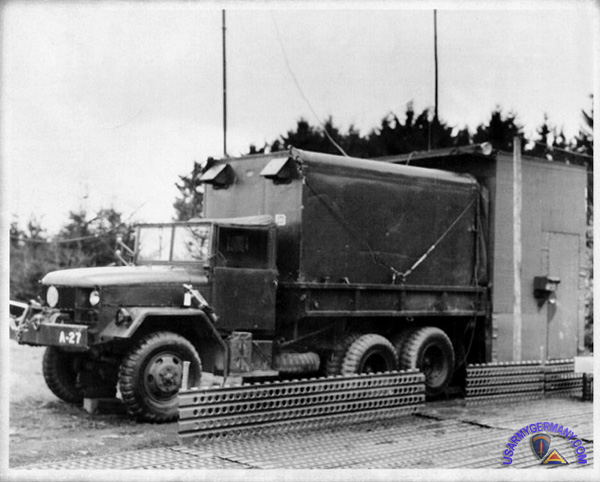 New Mexico Site, A Company, 440th Sig Bn, near Baumholder, 1968 |
||||||||||||||||||||||||||||||||||||||||||||||||||||||||||||||||||||||||||||
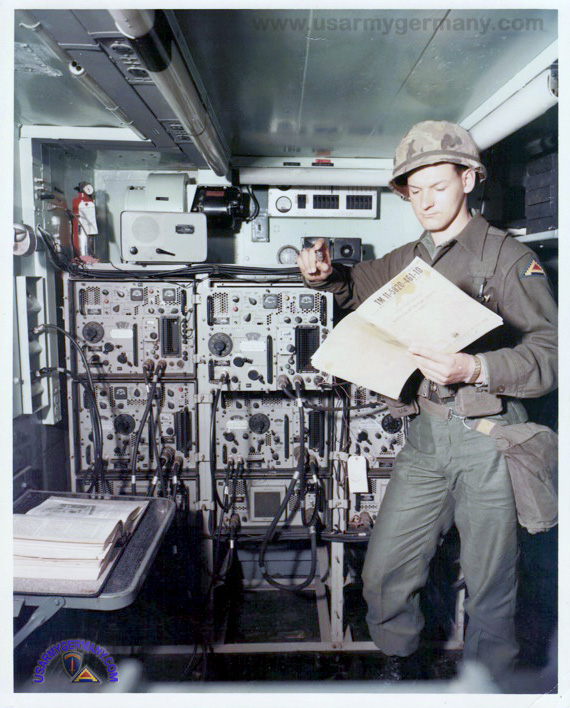 AN/GRC-50 transportable FM radio set, 440th Sig Bn |
||||||||||||||||||||||||||||||||||||||||||||||||||||||||||||||||||||||||||||
| Radio set AN/GRC-50 is a transportable medium capacity FM radio set designed to provide multichannel, two way communications in the UHF range. The AN/GRC-50 operates in conjunction with 4/12/24-channel FDM or 12/24-channel PCM equipment. You secure the radio system using TSEC/KG-27 (PCM only). The AN/GRC-50 operates in a variety of configurations as a radio terminal or repeater station in the communications network. (I believe the AN/GRC-50 would eventually be replaced with the AN/GRC-103.) The photo above shows the AN/GRC-50. | ||||||||||||||||||||||||||||||||||||||||||||||||||||||||||||||||||||||||||||
| COMMAND CENTER | ||||||||||||||||||||||||||||||||||||||||||||||||||||||||||||||||||||||||||||
| (Source: Email from Donald Gannon) | ||||||||||||||||||||||||||||||||||||||||||||||||||||||||||||||||||||||||||||
| It was part of the Army area communications system. The command center had the switch. frame, patch panel, teletype switch, and the MSC-32 that controlled all of the commo including the VHF, CXR, HF, RWI, Cable Construction, and Comm Center. Each company had a command center that controlled their equipment. The command center provided systems control and was part of the Seventh Army Communications Command systems control network. At battalion-level, they used an MSC-31 for systems control. |
||||||||||||||||||||||||||||||||||||||||||||||||||||||||||||||||||||||||||||
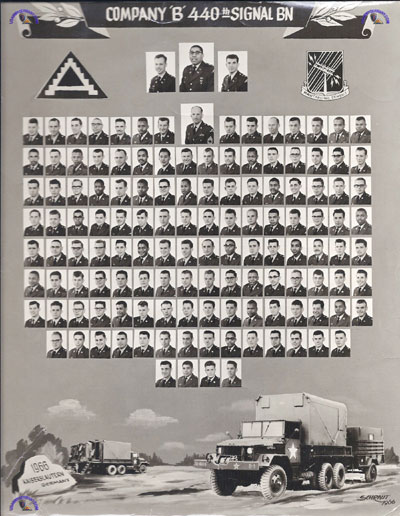 Group photo, B Company, 1966 (Please contact the webmaster if you can identify any of these soldiers) |
||||||||||||||||||||||||||||||||||||||||||||||||||||||||||||||||||||||||||||
| (Source: Email and group photo from Chales Clark) | ||||||||||||||||||||||||||||||||||||||||||||||||||||||||||||||||||||||||||||
| Served from 1963-67 K town. My pic (group photo page) is 4th row from bottom, 10th from left. When this pic was taken Captain Gregory was OIC. Noticed a lot of comments on Hawaii station. I made quite a few trips up there for water run after station personnel rolled the water trailer a couple of times and were being punished and not allowed to do it themselves. Made the stop at the gasthaus down the hill to dump a few gallons as usual. At one time a German Shepard dog was found and adopted by the station members and I recall the dog didn't care for strangers and was borderline mean but loved none the less. Forgotten most of the names in the picture. If I ever find a source will forward them. |
||||||||||||||||||||||||||||||||||||||||||||||||||||||||||||||||||||||||||||
| (Source: Email from Bill Reals, Jr., 440th Sig Bn and 541st Sig Co) | ||||||||||||||||||||||||||||||||||||||||||||||||||||||||||||||||||||||||||||
| I have some additional information on the 25th Sig Bn. I believe in 1966 the 25th was deactivated. As a result of the deactivation there was still a need for a Long Line Cable Construction Company. One Company was moved to Kaiserslautern, Kleber Kaserne, and was designated as the 541st Sig Co (CBL CONST). It was attached to the 440th Sig BN and remained with the BN until the 541st was deactivated I believe sometime in the 1980’s. The mission was to maintain an active long line cable line that was from Kaiserslautern to Mannheim, and up to Donnersberg Mtn. It was made up of Spiral 4 cable on 50 ft telephone poles. The Cable actually passed traffic from the 440th to 7th Sig Bde. In addition, it also passed traffic from the 32nd AADCOM, Army Air Defense Command Hq in Kapaun Barracks in Kaiserslautern. The cable line ran parallel to the Autobahn from K-town to Mannheim. There was also a leg of the line that went up to “Site Hawaii” which was maintained by the 440th Sig Bn. There was a Radio Relay site located there as part of the Communications spine that ran down the middle of Germany. I was a 2LT originally assigned to the 440th Bn and served 2 yrs in the 541st. I hope this information is helpful. |
||||||||||||||||||||||||||||||||||||||||||||||||||||||||||||||||||||||||||||
|
||||||||||||||||||||||||||||||||||||||||||||||||||||||||||||||||||||||||||||
| 1968 | ||||||||||||||||||||||||||||||||||||||||||||||||||||||||||||||||||||||||||||
| (Source: Email from Tom "Patch" Slater) | ||||||||||||||||||||||||||||||||||||||||||||||||||||||||||||||||||||||||||||
| I was drafted into the Army 1 Nov 1967 after having failed several pre-induction physicals in the preceding 2 years. I completed Basic at Fort Bragg, NC 19 Jan 1968 and went to Fort Gordon, Ga for Signal school. After completing only 11 weeks of the 12 week Radio/Relay/Carrier 31M20 course (C Co., 5th Bn, Student Brigade- 1SG Reese & 2LT Maddox) 12 of the 200 of us were re-assigned to Tactical Circuit Controller, 31N20 school (F Co., 6th Bn). I joined A Co., 440th Signal Bn in June of '68 and served as company training clerk and patch panel operator until ETS 13 Oct 69, I was promoted to SP5 9 Oct 69. In the field, I was 41 Patch or Cartwheel, our base ID, in Kleber Kaserne, was Carrot or 40 Patch.
When I arrived in Germany, it was pretty laid back. Things changed dramatically - the Soviets invaded Czechoslovakia and COL Morrison took over 7th Army Communication Command. All 5 of the Signal Battalions in the Command failed the first Command Maintenance Management Inspection after he took over. Our duty days were 12 hrs on/12 hrs off 7 days a week until we passed the CMMI. Our Company spent its fair share of time in the woods at Hohenecken, Wattenheim, Bad Kreuznach, and other areas, on FTXs. Shortly after my arrival in Germany, D Companies of most support units in Europe were re-assigned to Fort Hood, TX along with 3rd Armored Cav and others (Operation REFORGER). In December 1968, all of those re-assigned units were moved back to Germany for Operation Carbide Ice/Reforger I in the Hohenfels-Grafenwoehr area. The move back from the States took only 48 hrs courtesy of the newly deployed C5. Hohenfels was a unique experience, we arrived in the area along with a 2-foot snow fall which changed to ankle deep mud in about 48 hrs. Some of the people I remember were LTC J. T. Knox, Bn Commander; MAJ Keating, Bn XO; 1SG Robert Kusterer; SSG Roger "Pete" Herrmann. My best buddy, SGT Norman Nichols, re-upped for OCS and a 2nd tour in 'Nam; he stopped writing about 6 months into his tour. Nick's name isn't on The Wall nor is he listed as MIA. I am still trying to locate some of my card playing buddies from the 440th as well as a couple of guys from 541st Signal Construction (formerly C Co., 25th Signal Bn). I did come into contact with a member of the group, Miles Notz, completely by accident. |
||||||||||||||||||||||||||||||||||||||||||||||||||||||||||||||||||||||||||||
| (Source: James McDonald) | ||||||||||||||||||||||||||||||||||||||||||||||||||||||||||||||||||||||||||||
Let me tell you a little about myself. I entered into the U.S. Army on 18 September 1967. I went through training at Ft. Campbell Ky. 101st Airborn D-10-2. I then went to Ft Gordon Ga. to train in my mos. I was a 31m20.
|
||||||||||||||||||||||||||||||||||||||||||||||||||||||||||||||||||||||||||||
|
||||||||||||||||||||||||||||||||||||||||||||||||||||||||||||||||||||||||||||
DEPARTMENT OF THE ARMY HEADQUARTERS AND HEADQUARTERS COMPANY 440th SIGNAL BATTALION APO 09227
|
||||||||||||||||||||||||||||||||||||||||||||||||||||||||||||||||||||||||||||
"HAWAII SITE 49" is a relay, terminal and demodulation station with R.W.I facilities. It operates a total of FIVE RADIO SHOTS, THREE TERMINAL AN/TCC's repeater cable land-line with TCC-11 repeaters in normal operations. The radio systems are A3ADMI, A049VI, and A349VI. The A3ADMI is a mixed radio and cable combination with a radio shot to back up the cable system. The terminals A049VI, and A039VI terminates in SB-675 with lines going to various locations that are patched through a 50 pair cable to CENTAG is under ground from HAWAII SITE to CENTAG and to units east of the RHINE RIVER from the CENTAG location. System A3ADMI originates in HEIDELBERG and terminates in MANNHEIM with radios from HEIDELBERG to HAWAII SITE and cable from HAWAII SITE to MANNHEIM. It has radio back-up from HAWAII to MANNHEIM. The cable system uses the AN/TTC-8 repeater with TCC-11 unmanned repeaters in the cable. System 4900V1 is radio from VOGELWEH to HAWAII terminating at HAWAII's patch and is patched to other locations such as MANNHEIM, HEIDELBERG and CENTAG. During FTX's and CRASH OUTS, systems are maintained by A company of the 440th Signal Battalion with additional systems such as 4241V1, 4209V1, and 4292V1 with switch board and COMM CENTER FACILITIES. It gives us an additional three {3} to five {5} systems plus continual R.W.I. capabilities. All systems operate on a 12 channel carrier basic. Power is commerical during normal operation with SF-10 - 10 KW generators as back up. The power is 220 volts with step down power to 110 volts a. c. on FTX's, all radios are on commerical power and carrier systems are on generator power. Using all equipment during an FTX over-loads commerical power facilities and cause circuit breakers to trip causing outages. Four SF 10 generators are in stand by ready on a moment's notice in case of commerical power failure. Six generators are in reserve. The men of HAWAII DEMOD are proud of there designation as "PRIDE OF THE 440th" and continually strives to improve their facilities, both on a self-help basis and in conjuction with the army engineers. Recent accomplishments include a paved road to the site, a new paved HELI-PAD, a new all-electric mess hall and kitchen complex, and new billets. Projects underway include camouflage of buildings on the site. construction of a POL SUMP, and landscape beautification. Recreation facilities for the men of HAWAII DEMOD include a dayroom equipped with pool table, ping-pong table, fuss-ball machine. Nightly full length movies are shown at no cost to the men. HAWAII is a designated theater of the AAFMPS. The work shift rotation also allows each man to visit KAISERSLAUTERN at least once a week to purchase px items. Nightly pass runs off duty personnel are made to the nearby town of BAD DURKHEIM. |
||||||||||||||||||||||||||||||||||||||||||||||||||||||||||||||||||||||||||||
| 1972 | ||||||||||||||||||||||||||||||||||||||||||||||||||||||||||||||||||||||||||||
| (Source: Philip R. Paonessa, B Co, 93rd Sig Bn/440th Sig Bn) | ||||||||||||||||||||||||||||||||||||||||||||||||||||||||||||||||||||||||||||
I joined B Company of the 93d Signal Battalion at Cambrai-Fritsch Kaserne in Darmstadt in the late summer of 1972 as an 05C20 at the TADDS compound. Shortly after I arrived, the 93rd became the 440th. I was under the impression that the 93rd was absorbed by the 440th when the 440th moved from Kaiserslautern to Darmstadt.
1st Seargent Godsey was the top of Bravo Company, and CSM Bell was the CSM of the Battalion. I can't remember B Company's CO's name, but shortly after we became the 440th, B Company's CO took over the supply section at HQ Company which was across the quad from B Company. The new top at Bravo (1st Seargent Godsey retired shortly after the 440th moved in) was 1st Seargent Harold E. Hamric, and again, I can't remember the CO's name. I was part of the team at the TADDS compound, but in my final year at Cambrai-Fritsch (1974) I was the unit DAES (Drug and Alcohol Education Specialist.) During the summer of 1974, I was part of the team sent from the 7th Signal Brigade to Egypt to participate in the Nimbus Star / Nimbus Moon endeavor. We were part of a UN team sent over to provide communications support to the teams clearing the Suez Canal after the Arab / Israeli war. The participants from the 7th Sig all received meritorious service medals for their time in Egypt, and that's some history of the 440th I don't see on any of the websites. I'd sure like to contact some of the guys from that era, especially 1st Seargent Hamric and the CO from that period of Company B. My memories of the CFK layout are pretty clear, and I still have contact with a buddy who was a V Corps cook, and one who was a medic on CFK who could help me with it. The TADDS compound was a secure compound with an MP guard. It was on the opposite perimeter from the main gate. My teletype trailer was right up against the perimeter fence. There were several communications trailers (huts to us!) and we maintained a teletype network with the other 7th Sig battalions in USAREUR, and the Brigade headquarters in Mannheim. We passed daily teletype traffic and often made runs to the 440th HQ there at CFK.
7th Sig was tasked in May of 1974 to send a contingent of soldiers to Port Said at the Mediteranean end of the Canal, Lake Timseh somewhere in the middle, and another spot I can't recall at the Red Sea end of the Canal, to support the Suez Canal Mine Clearance project the UN was running in Egypt. It was called Nimbus Star / Nimbus Moon. We provided commo support and hard copy reports to the Navy, Air Force, and to the civilian organizations that were supporting the effort. We always got a kick out of the fact that the Marines were there for a month before us and couldn't establish a network, and they were pulled out for that and other reasons. 7th Sig and the guys from the 440th went in and we were on the air the day after we arrived! On several occasions our TTY network was jammed by a few "unidentified" sources, so we continued commo with Morse Code, believe it or not. We also ran a radio net for the choppers that carried equipment and upper echelon types back and forth along the Suez. If I remember correctly, there were 7 enlisted guys from each battalion, and two officers from HQ in Mannheim; a major and a 1st Lieutenant that made up the teams. We also worked with a few Air Force and Navy guys. The support ship in the area was a Navy minesweep called the Barnstable County. We were allowed to board and buy goods from the ship's store. It was the only place in the country where we could get cold cokes and beer! The Barnstable County supplied a corpsman for any medical needs we had. I had the the wonderful experience of contracting malaria and food poisoning at the same time, so I got to know the corpsman on a first name basis!
|
||||||||||||||||||||||||||||||||||||||||||||||||||||||||||||||||||||||||||||
|
||||||||||||||||||||||||||||||||||||||||||||||||||||||||||||||||||||||||||||
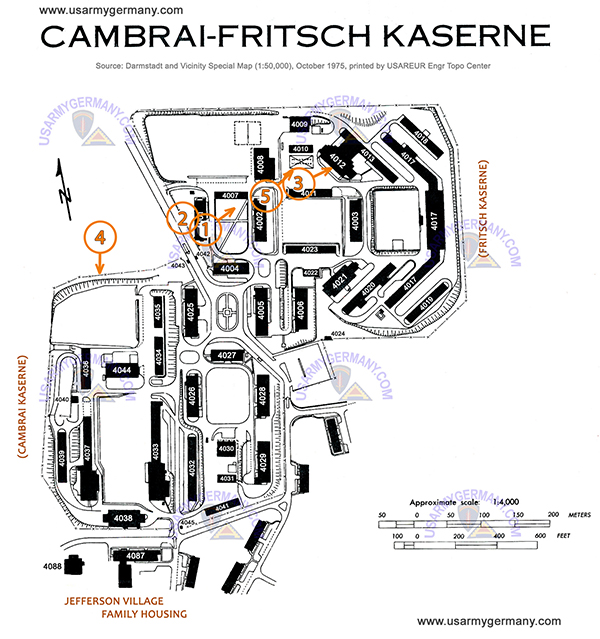 Cambrai-Fritsch Kaserne, mid-1970s (Webmaster's collection) (The circles with the arrow indicate from where the numbered photo was taken and the direction in which the camera was pointing.) |
||||||||||||||||||||||||||||||||||||||||||||||||||||||||||||||||||||||||||||
| 1974 | ||||||||||||||||||||||||||||||||||||||||||||||||||||||||||||||||||||||||||||
| (Source: Dale Pray, via "I was at Cambrai Fritsch Kaserne (or around there)" Facebook Group) | ||||||||||||||||||||||||||||||||||||||||||||||||||||||||||||||||||||||||||||
| Dale was assigned to HHC, 440th Sig Bn, Feb 1974 - Feb 1976. | ||||||||||||||||||||||||||||||||||||||||||||||||||||||||||||||||||||||||||||
|
||||||||||||||||||||||||||||||||||||||||||||||||||||||||||||||||||||||||||||
| Related Links: 440th Signal Battalion - Patrick Mahoney's website now included WWII and Korea era information and photos -Inactive Links - Inactive Link 440th Signal Battalion Facebook Page - Group page for former members, their families and friends of the 440th Signal Battalion |
||||||||||||||||||||||||||||||||||||||||||||||||||||||||||||||||||||||||||||
